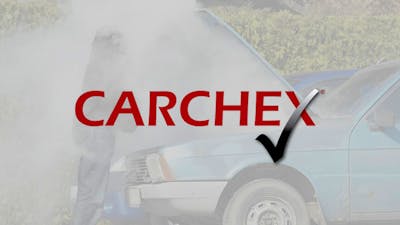What Voids Your Car's Warranty?
Vehicles, like almost every other high-dollar purchase in your life, have extended warranties. In the best of times, the warranty is designed to protect you from defects in the vehicle, meaning that if something breaks and it’s the manufacturer’s fault, they’ll pay to fix it. That doesn’t, however, give you free license to do with the car as you please. There are a number of actions you can take that void the warranty or change what it actually covers.
Popular Warranty Providers
Manufacturer Warranties vs. Extended Warranties
The warranty that came from the vehicle manufacturer is the only thing that we’re talking about in this story.
“Extended warranties" are not warranties at all. They’re prepaid service contracts that are between you and the company that administers it, and the things that can void those warranties can fill a separate story. If you’re buying an extended warranty be sure to read the contract to learn about what can void it.
When you purchased your car, it came with several warranties against defects from the manufacturer. The original warranties include:
- Powertrain warranty -- covers most things that make the car go, including the engine, transmission, transaxle, drive axles, differential, center differential, transfer case, etc. These warranties are usually longer than the next type of warranty.
- Bumper-to-Bumper warranty -- also known as a “comprehensive” warranty. These cover everything BUT the powertrain.
- Tire warranty -- the manufacturer of the tires equipped on a new car provides a warranty with a new car.
- Emissions warranty -- this is mandated by the federal government, along with several states. The emissions warranty covers anything emissions-related and is good for eight years or 80,000 miles. You can read more about it at the EPA’s website.
Fast Extended Warranty Rate Quotes
Call now 1-855-534-1173 or get an online quote

Things That Can Void Your Warranty
- Abuse of the vehicle
- Neglect of routine maintenance
- Racing or off-roading
- Certain aftermarket modifications
- Natural disasters, such as flooding or fire
Not all vehicle manufacturers handle warranty claims or issues in the same way, so it’s important to understand what is and isn’t covered by your vehicle warranty. If you’re planning on modifying or racing your vehicle, get in touch with the dealer’s service department or the manufacturer’s help line to determine where you’ll land on the spectrum of voided warranties.
What is a Partial Warranty Void?
Even if you’ve modified a vehicle or abused it in some way, there may be cases when the manufacturer gives you a pass by only voiding the warranty on the portion of the vehicle that applies to a specific issue. The overall warranty remains on the rest of the vehicle, but you’ll have lost access to coverage for a specific part.
What Can Cause Your Claim to be Denied?
When you take your vehicle to the shop for a warranty repair, the technicians will assess the problem and make a determination on whether or not it will be covered by warranty. If the tech finds modifications or signs that you have abused the vehicle, they may report that the repair will not be covered by the warranty. This can also occur if the part is not part of the originally stated warranty coverage. Some manufacturers exclude parts like turbochargers and other components from the original coverage, so it’s important to know what is and isn’t covered when you head to the shop.
What Voids Your Entire Warranty?
There are several situations that can cause your entire vehicle warranty to be voided.
- If the vehicle has been deemed a total loss by the insurance company after an accident, the warranty coverage may be voided.
- Modifications that have been done to the vehicle that permanently alter the way it operates, such as turbochargers, work to the engine’s internals, or suspension changes.
- Odometer fraud or alteration of the vehicle’s records in any way can lead to the warranty being voided.
- If the vehicle is used in competitive racing or other events and is damaged, the manufacturer can void the warranty.
How to Avoid Car Warranty Issues
There are obviously situations where a warranty-voiding action is unavoidable, but in general, it’s quite easy to keep your vehicle’s warranty intact.
- Don’t modify your vehicle without first checking with the dealership’s service department. Changes such as snow tires may not be a problem, but adding a cold air intake, flashing the ECU, and other changes might.
- Don’t use your vehicle for racing or off-roading until the warranty period is up. Better yet, buy a beater to use in those circumstances.
- If you suspect that your vehicle has been altered in a way that has changed the mileage or some other major detail, report it as soon as possible.
- If your vehicle has been deemed a total loss or has sustained major damage in a wreck, check with your manufacturer on whether or not the warranty has been voided.










